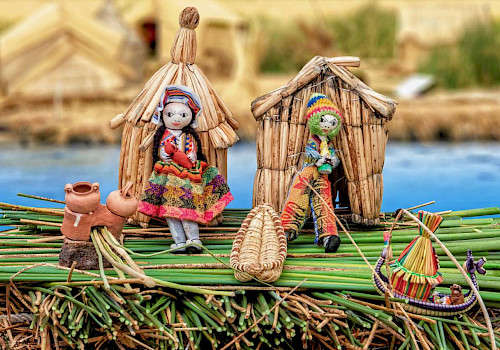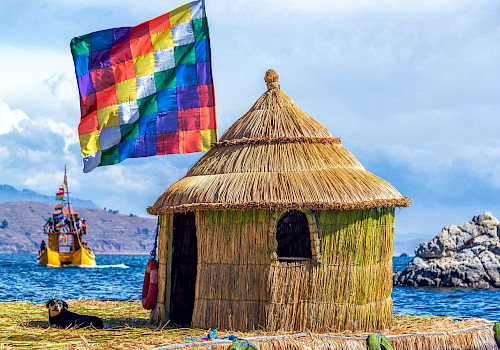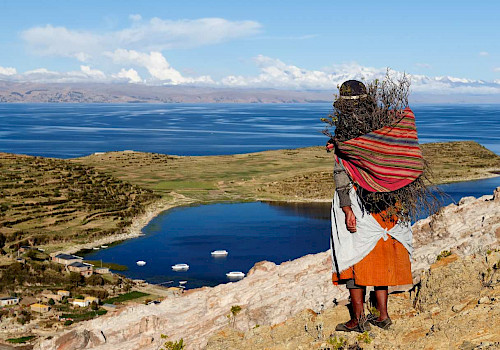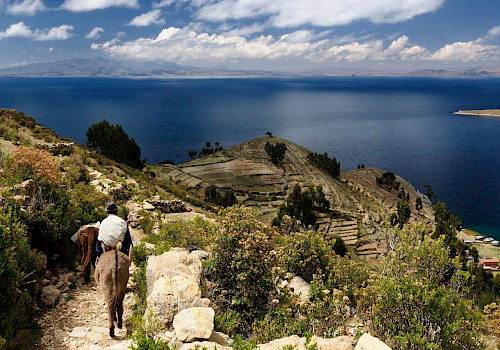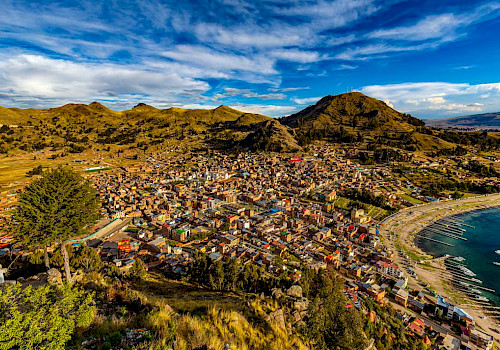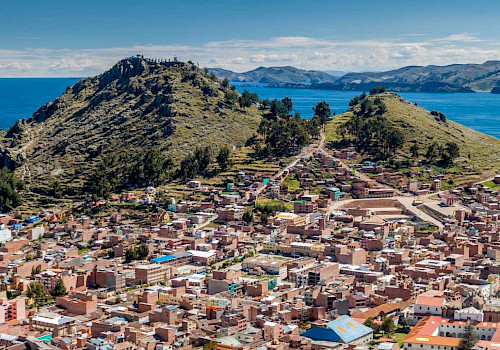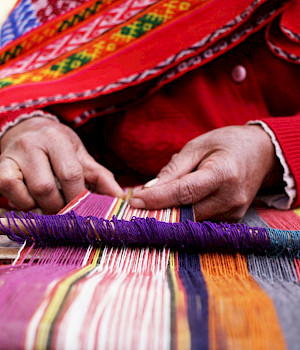

October 20, 2023
The infamous Lake Titicaca detains the record for being the largest high-altitude lake in the world. Straddling both Peru and Bolivia, this body of water is bigger than Lake Geneva in Switzerland at 8300 square kilometres and sits atop the Andes mountain. The Titicaca Basin is also considered to be the birthplace of the Incas and there are numerous ruins scattered across the area. It is a place rich of history and culture. The landscape and environment is verdant and houses plants and animals that are endemic and highly protected.
Lake Titicaca is a must-visit if you are looking for a trip that includes both history and beautiful vistas. With a whole hosts of activities and sight to see you are sure to enjoy your holiday to Titicaca.
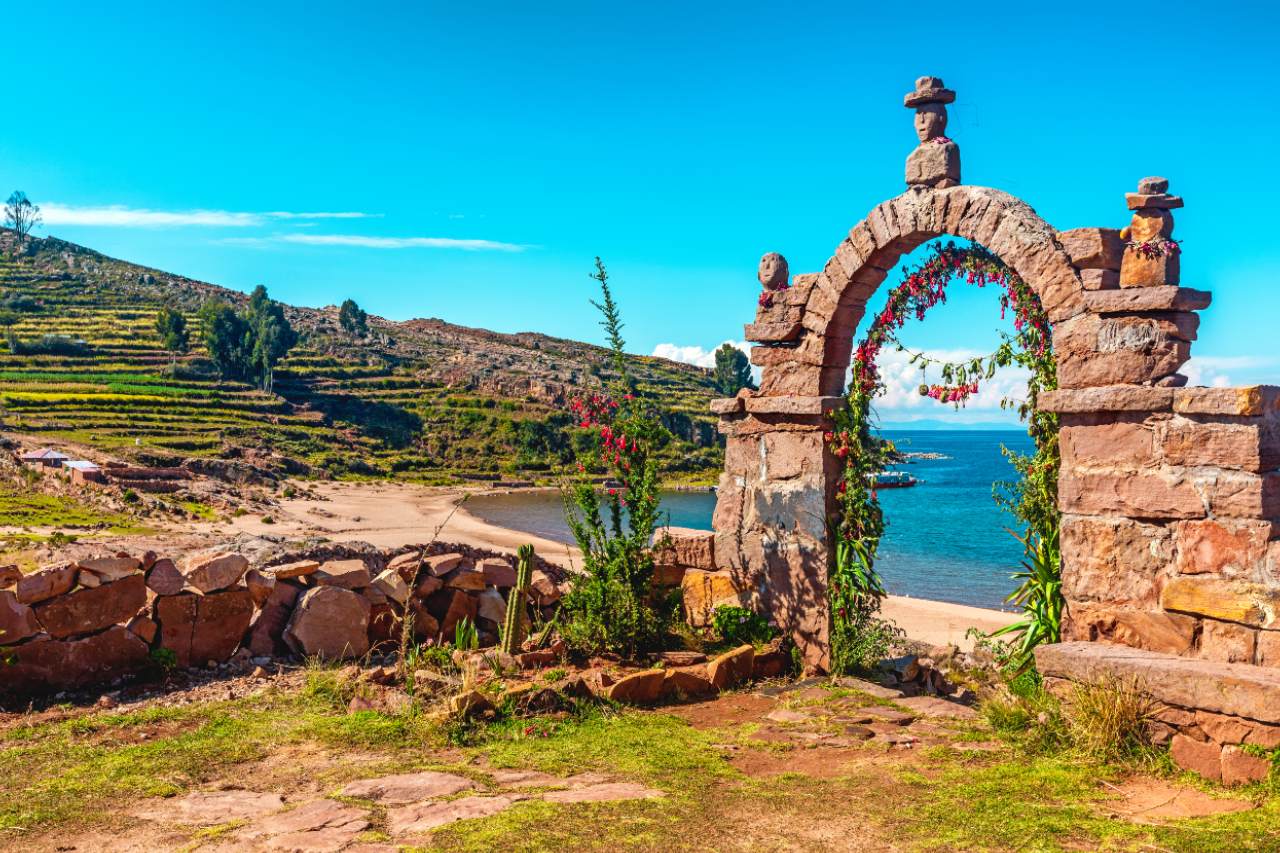
The History of Lake Titicaca
The word Titicaca comes from the word Aymara that means “Stone Puma ” and this refers to the shape of the lake that natives say resembles a puma. It is the Andeans belief that Lake Titicaca is the birthplace and cradle of Peru’s ancient civilisation. The Incas believed that the lake was where the sun was born which is why you will find many temples and ruins located on the islands and off the shores of the lake.
Though the Incas are the most famous inhabitants of the region, the region has always been a hotspot for different indigenous people. A temple was found at the bottom of the lake by archaeologists that is believed to have been built by the Tiwanaku people over 1,500 years ago. There are also remains of a village and roads alongside the temple that will have you wondering what happened here all those years ago.
The floating islands of Uros - Peru
When visiting Lake Titicaca from Peru, by far the most famous attraction are the Uros Islands. These man made floating islands are made by the Uros Indians who, at the time, sought to escape their neighbours the Incas. The islands have been constructed by layering Totora reeds which are found in great numbers along the banks of the lake. The reeds are also used to create walls and roofs which provide housing for the inhabitants of the islands.
There are 48 of these islands dotted across the lake with a combined total of 600 inhabitants. The most prominent of the islands is Huacavacani with a large number of the Uros people living here. Huacavacani is the only island that can be visited through guided tours and provides a great opportunity into the insight of the people and culture. From learning about how the islands are built to hearing about the history of the Uros people, a visit to Huacavacani is an eye opening experience.
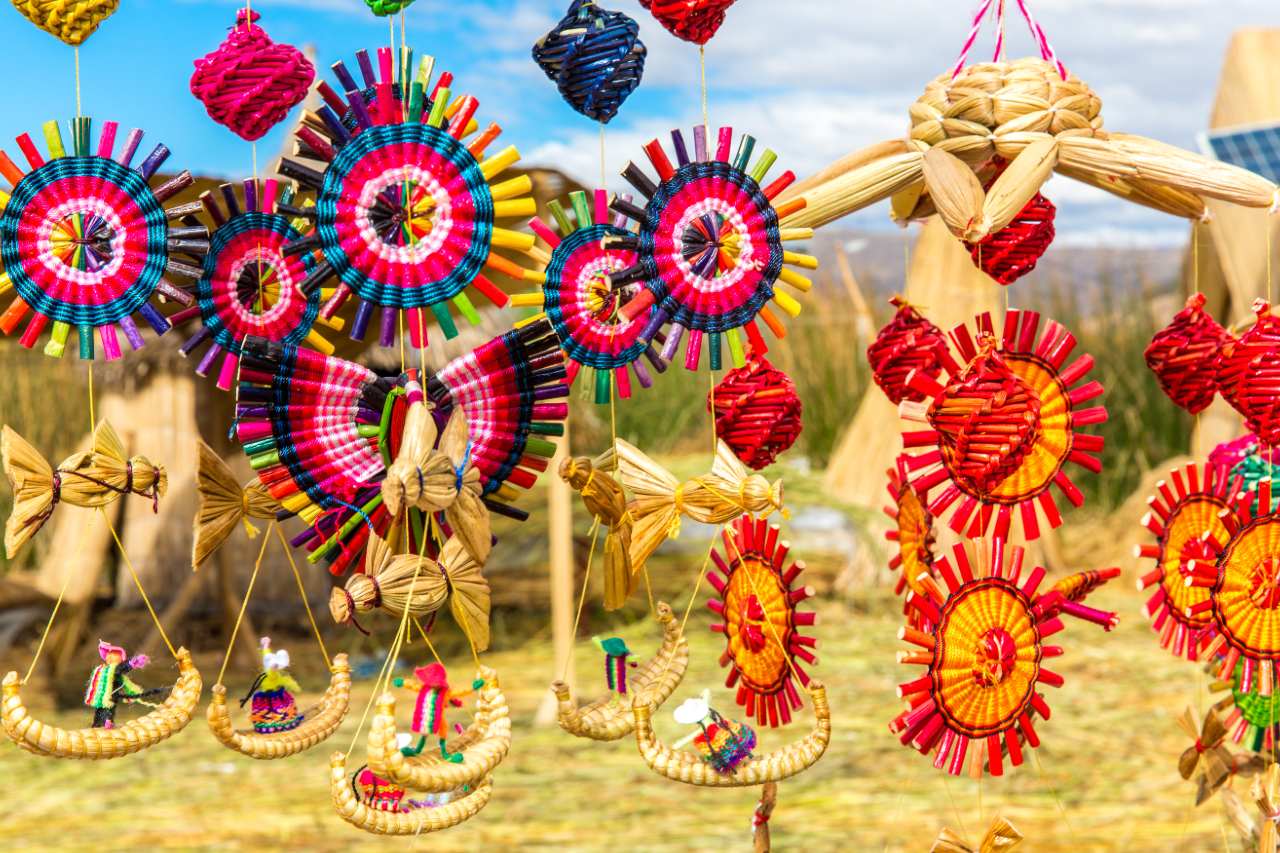
The festivals of Puno - Peru
Puno is one of the major cities in Peru and the closest one to Lake Titicaca located right along its shore. A great starting point for your visit of the region, Puno is a melting point of culture and history with any different indigenous people having lived here in the past. The Pukara culture was the first to emerge here followed by the more notorious Tiahuanaco culture. It was also a briefly overtook by Spanish settlers in the 17th century when a silver moon was found on the outskirts of town.
Nowadays Puno is known for being the folklore capital of Peru. Throughout the year the city holds many different festivals to celebrate the music, dance and traditions of the region. The Fiesta de la Candelaria is the most renowned of the festivals which takes place in February. This dance festivals sees locals wearing devil masks and taking to the streets to showcase the intricate dance moves of the festival.
The Semana Jubilar is a week-long festival that takes place on the Isla Esteves and celebrates the origins of the Incas as well as the founding of the city by the Spanish. It is a very important festival in Puno and many people from across Peru will come to witness and take part in the festivities. Music is an important part of this festival with bands and groups of singers taking turns to showcase their talent for the audience while retelling the story of the people and the an-cestor of Puno.
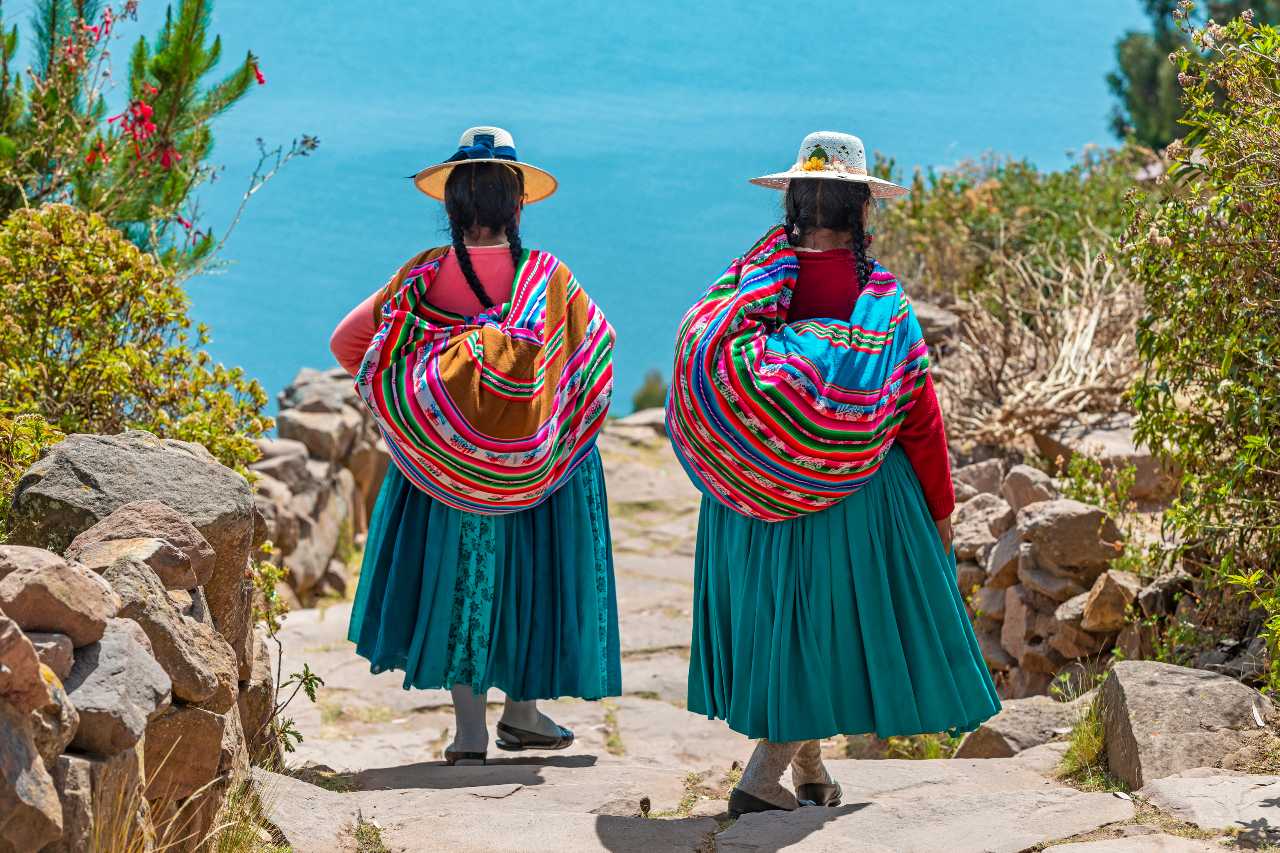
Taquile Island - Peru
Taquile is an island located 45km from the shores of Puno and is one of the few none man Mande floating islands on the lake. It is inhabited by roughly 2,000 people making it one of the islands with the smallest population. An interesting fact to know about Taquile is that there is no grid-connected electricity meaning that many of the people here use candles and fires to light up their nights. However, over the past couple of years, solar power has made its way here and a couple of houses use solar lighting. It is a good idea to bring matches and candles during your visit here.
Taquile is known throughout Peru for being the place to find expertly knitted cloth. The people of Taquile produce the finest knitted alpaca wool using techniques that have been taught from generation to generation. They make all of their clothes themselves which is quite impressive especially when you learn that the women often wear up to eight skirts at the same time.
Fishing is one of the main activities on the island as the waters surrounding the island are abundant with the aquatic animals. It is even possible for you to take a fishing trip with some of the locals and try your hands at fishing kingfish, a recent addition to the waters.
Discover Isla del Sol - Bolivia
Isla del Sol is perhaps the most well-known of sights in Titicaca. A small island on the lake, its name which means Island of the Sun comes from the fact that Incas believed it to have been the birthplace of their sun god. The island is a prime destination if you are looking to learn more about the history of the Inca people as well as their traditions. There are many ruins that have been left on the island and are a testament to this incredible civilisation.
Some of the highlights of the island are the Escalera del Inca located in the village of Yumani that is said to lead to a spring that if you drink from it will prolong your life. In the village of Challapampa, on the other side of the island you will find the ruins of the Chincana. The ruins are also known as El Laberinto due to the incredible maze of stone walls that ultimately lead to a stone well that is said to have healing and purifying powers.
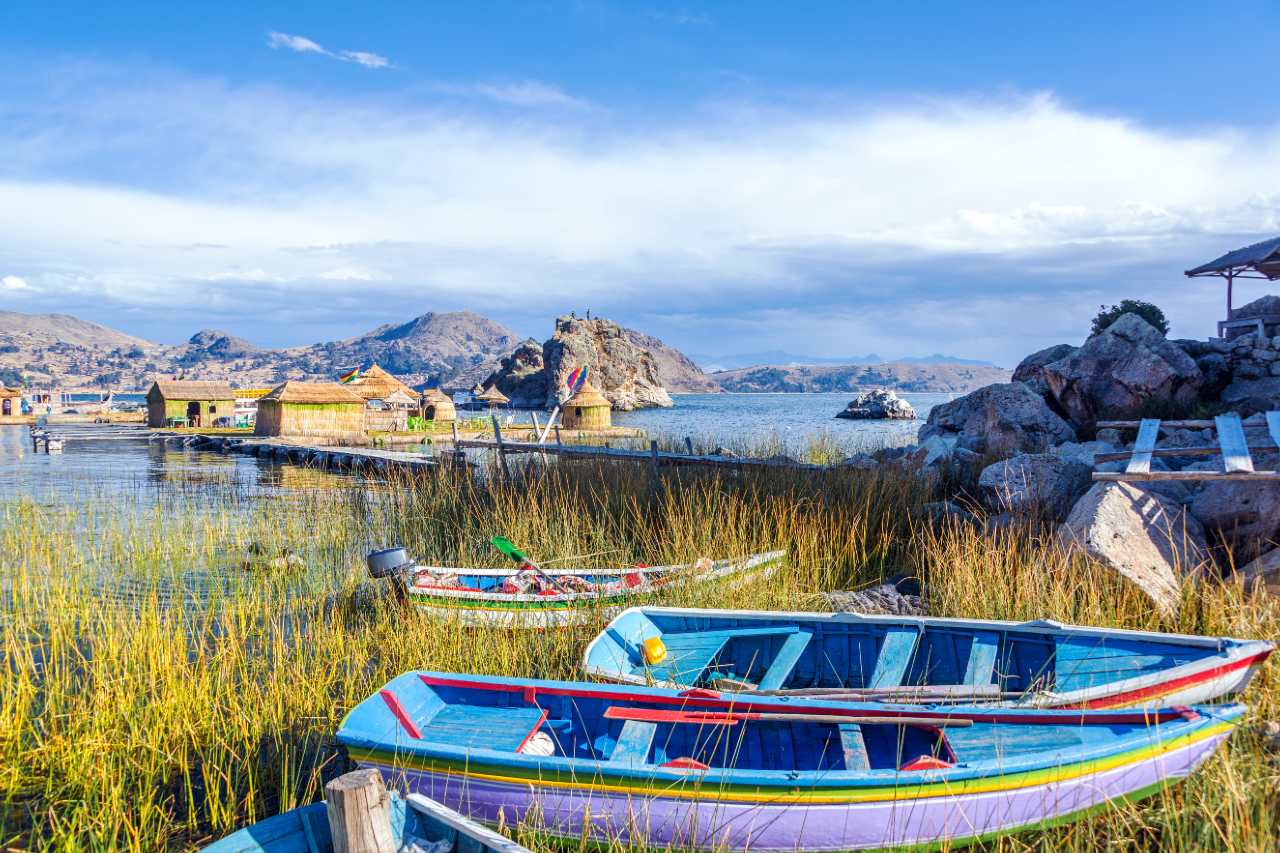
Copacabana, the Gateway to Lake Titicaca - Bolivia
The town of Copacabana is the closest town to the lake in Bolivia. This town is not to be confused with the famous beach in Brazil which goes by the same name. The two could not be more different with the coastal town being a quiet and modest place compared to the boisterous appeal of its Brazilian counterpart.
Located right along the lake it is an ideal place to centre your visit to Titicaca from. With its red roofed houses and quaint atmosphere it is the perfect place to relax after a day spent exploring the lake and surrounding area. The main attraction being the lake there is not much to do in the town but you should still take the time to explore the Catedral de la Virgen de la Candelaria. The church is placed on sacred Inca grounds and is considered by both the Indigenous and Catholics alike. Many faithfuls come on a pilgrimage to the church to see and pray to the sculpture of the Virgen de la Candelaria found in the church.
The Wildlife of Lake Titicaca
The lake has been named a National Reserve since 1978 in an effort to protect its incredible wildlife. Over 14 species of fish and 18 of amphibians have made the lake their home. One of these animals, the Titicaca Water Frog is considered an endangered species who lives below the surface of the water and deep in the depths of the lake. One of this amphibians notable features is their excessive skin that envelops their bodies and allows them to absorb oxygen without ever needing to come to the surface. An incredible feat for such a small creature. The different types of fish that are found within the lake include:
- The carachi: a type of piranha that is a commonly found in the dishes of the local population
- Trout: That made an appearance in the lake after having followed the meandering of rivers in-land.
- Pejerey or kingfish: a popular fresh water fish that is found in abundance in the lake
Lake Titicaca offers you the opportunity to get to the root of the Inca culture and all of its incredible history. A visit to this high-altitude lake will be sure to inspire and be the source of many unforgettable memories.
Do get in touch with us to include Lake Titicaca into your itinerary for a truly once in a lifetime expe-rience.

